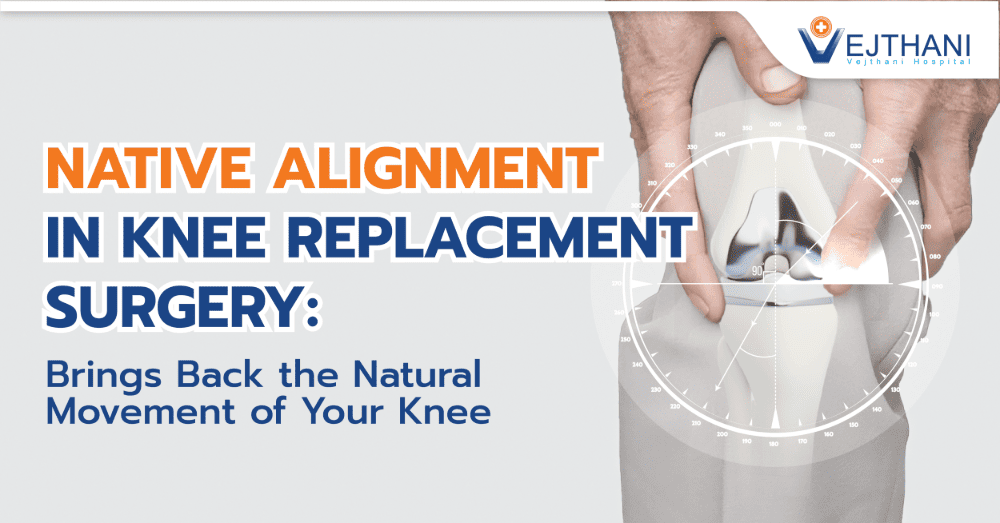
Breast implants
Overview
Prosthetic devices, commonly referred to as breast implants, are surgical enhancements that can be implanted into the breast tissue. These implants typically consist of silicone shells filled with either silicone gel or sterile saline solution. Plastic surgeons are the medical professionals responsible for performing breast implant procedures.
There are various reasons why individuals opt for breast implants. Some choose to undergo this surgery after losing a breast due to cancer, in a process known as breast reconstruction. Others, who are in good overall health, may desire to alter the size or shape of their breasts for aesthetic reasons. This latter procedure is referred to as breast augmentation or colloquially as a “boob job.”
The decision to undergo breast implant surgery is a personal one, and it can be an empowering choice that aligns with an individual’s desires and self-confidence. However, certain considerations should be taken into account before proceeding. It’s important to be in excellent physical condition and have fully developed breasts. Additionally, having realistic expectations about the outcome of the procedure is crucial.
Reasons for undergoing the procedure
A common goal of breast implant recipients is to increase their breast size. There are various reasons why you might desire to increase the size of your breasts, such as:
- Restructuring asymmetrical breasts, which differ in size or form. Breast asymmetry is typical, but if you have tissue damage in one of your breasts before to puberty, it could be more noticeable.
- Going back to your former breast size. Breast size can decrease with aging, weight reduction, or pregnancy.
- Breast restoration following a mastectomy (breast removal). Breast implants give women who had their breasts removed due to cancer or other significant health conditions a sense of completion and femininity again.
- Increasing self-confidence. Your body image and sense of self-esteem can both be enhanced by breast implants.
- Acknowledging your gender. You can more effectively express your gender identity when you have breasts.
The average lifespan of new breast implants is ten years, however your experience may vary.
Types of breast implants depending on their texture. The technology for breast augmentation and breast implants has advanced remarkably to produce outcomes that seem natural. Compared to saline breast implants, silicone breast implants typically feel more natural. Yet, depending on the size of the breast prior to surgery and the location of the implants, both saline and silicone breast implants may feel natural.
Breast implants placed submuscularly are positioned beneath the muscles of your chest and breast tissue. You feel your natural breast tissue on top of your breast implants as a result.
Breast implants placed subglandularly fit between your breast tissue and your chest muscles. The feeling of your breast implants will be natural if you have plenty of breast tissue. Your breast implants might not be completely covered by breast tissue, though, if you don’t have a lot of breast tissue. Your breast implants could not feel or look natural as a result.
The way breast implants feel can also be influenced by the type of shell. Shells for breast implants can be textured or smooth. Smooth shells feel more natural than textured shells because they are thinner. Additionally, smooth shell breast implants move more naturally during activity, more in line with breast tissue.
A smooth shell is thinner than one with roughness. The sensation of textured breast implants is rougher to the touch, like to the surface of a sponge. The implants are less likely to spin or move because of their gritty texture, which helps them adhere to the breast tissue. Smooth shells feel softer than filled, textured shells.
Types of breast implants based on how they look
In 2012, the FDA of the United States approved the use of a very cohesive silicone gel breast implant. Gummy bear breast implants are the term used to describe these implants. They hold their shape when cut in half, much like gummy bear candies.
There are many shapes for breast implants as well. A round circular breast implant, resembling a doughnut without a hole, is possible. Others might resemble a teardrop or a natural breast, with a rounded bottom and a narrow top. They thus resemble natural breasts more.
The shell of a round breast implant can be textured or smooth. On the other hand, teardrop-shaped implants often simply include a textured casing. The likelihood that textured shells would rotate and seem unnaturally is decreased.
Risks
Implanting breast tissue carries some hazards, such as:
- Breast lift surgery. Breast implants don’t lift your breasts; instead, they enlarge them. Talk to your doctor about getting a breast lift and breast implants together if you want your breasts to get more size and stop sagging.
- Breast implant complications. Short-term complications and long-term problems are the two categories of complications. Bleeding is one of the short-term problems that can happen during or after surgery. Later on, long-term issues can arise and include things like implant hardening.
- Breast Implant-Associated Anaplastic Large Cell Lymphoma (BIA-ALCL). BIA-ALCL is an uncommon immune system cancer. It’s a kind of lymphoma that develops in the tissue next to breast implants, not breast cancer. It is more frequently linked to breast implants with a textured shell, however specialists are still learning more about this connection.
- Breastfeeding (chestfeeding) complications. While many breast implant recipients are able to breastfeed with success, some are not able to or their ability to make milk is compromised.
- Additional surgeries. Even though breast implants are long-lasting, people are more prone to experience issues that need additional surgery the longer they have them. Repositioning an implant, eliminating scar tissue, and replacing or removing implants are possible additional operations.
Before the procedure
Women’s breasts continue to grow into their late teens or early 20s. Consequently, in order to have saline-filled breast implants, you must be at least 18 years old. The FDA advises against getting silicone-filled breast implants until you are at least 22 years old.
Your doctor will evaluate a number of things, such as your social and emotional health and might inquire what your expectations are, the reason why you want breast implants, and if you have done any plastic surgeries in the past. Furthermore, your doctor will also ask if you think that you have any imperfections in your body or if your partner is the one persuading you to undergo plastic surgery.
Your body type and physical condition are also significant factors. Your doctor will perform a physical examination to assist you in selecting the appropriate implant. In addition to taking your weight and height, they will examine your entire body composition. For instance, patients with wider hips or shoulders frequently require larger implants. More substantial breast implants may result in health problems, such as shoulder, neck, and back pain, if you have a smaller frame.
When choosing the size of your breast implants, it’s critical to take your appearance into account. Consider going clothing shopping. A changing room is the best place to try on a clothing, even if you like it hanging there. You might not like how the shirt feels or appears on you after you take a close look at yourself in front of full-length mirrors. If you would want to see yourself in a mirror before surgery, you might want to ask your doctor if they have sample breast implants that you could wear under your sweater or shirt (preoperative sizing). You can choose the ideal breast implants for you by trying on several sizes and shell types thanks to preoperative sizing. Ultimately, the advice of a qualified plastic surgeon is priceless when it comes to selecting the appropriate size.
Your doctor and you will also discuss the pros and downsides of silicone versus saline breast implants. You’ll also think about the placement, texture, and shape of the breast implant (round or teardrop-shaped).
Your doctor will usually place your breast implants in two areas. Your breast implants are beneath the chest muscles when they are positioned submuscularly. The breast implants are positioned subglandularly, fitting between the glandular breast parenchyma and the chest muscles. Make sure you discuss the benefits and drawbacks of each type of breast implant insertion with your doctor.
During the procedure
You are sedated during a breast implant procedure in order to prevent you from feeling pain or awareness of the procedure.
In order to minimize the visibility of breast implant scars, an incision is made in one of four discrete places of your body after you are asleep. Among the incision kinds are:
- Periareolar: a cut made along the outside border of your areola, which is the pigmented region that encircles your nipple.
- Inframammary: a cut made in the fold between your chest and the bottom of your breast.
- Transaxillary: a cut made beneath your armpit.
- Transumbilical: a cut in your belly button.
Every kind of incision has benefits and drawbacks of its own. Discuss with your doctor the optimum kind of incision for you.
Following the surgery, your breast implants are either positioned between your chest muscles and breast tissue or beneath your breast tissue and muscles.
After the procedure
Your doctor will wrap your breasts in a special supportive bra or compression band after the breast implant operation is finished. Your anesthesiologist will cease administering anesthesia to maintain your unconscious state. After that, you’ll be sent to a recovery room where your doctor will wait for you to wake up and keep an eye on your general health.
You could feel disoriented, your breasts hurt, and your chest feels constricted when you wake up. For a few hours or longer, your doctor will keep an eye on your general health. They will discharge you (let you to return home) as soon as they decide you no longer require observation. For the first 24 hours following your breast implant procedure, you must be driven home and cared for by a family member or friend.
Your body should heal completely from your breast implant treatment six to eight weeks on average.
Outcome
The initial phase following a breast implant procedure is often the most uncomfortable, typically spanning the first few days. During this period, it’s common to experience bruising and swelling in the breast area, along with chest soreness. It’s not uncommon for minor bleeding from the surgical wounds to occur. Discomfort and pain usually start to diminish within five to seven days. Some individuals may use over-the-counter acetaminophen or prescribed pain relief medications to manage the discomfort. It’s essential to discuss any allergies and medical history with your doctor before taking any medications.
Recovery allows for a gradual return to normal activities. Light everyday tasks, like desk work, can often be resumed after one to two weeks. However, strenuous physical activities such as running, heavy lifting, or raising your arms above your head should be avoided during this initial recovery period.
In the weeks that follow, you may still experience mild soreness and some residual swelling, but it should be minimal. Bruising may still be present, but it tends to fade gradually. During this phase, engaging in light activities may become possible, but vigorous tasks, including heavy lifting, should still be avoided.
A full recovery typically occurs around six to eight weeks after the breast implant procedure. It’s important to note that individual recovery times may vary, so it’s crucial to follow your doctor’s guidance on managing pain and discomfort throughout the recovery process.
When considering a return to work, the timing may vary depending on your occupation. Some individuals may be able to resume work within two to six weeks following the breast implant procedure, particularly if their job involves minimal physical exertion. However, jobs that require significant physical effort may necessitate a more extended recovery period of at least six weeks before returning to work. Your specific circumstances and occupation should be taken into account when planning your return to work.
Contact Information
service@vejthani.com






















